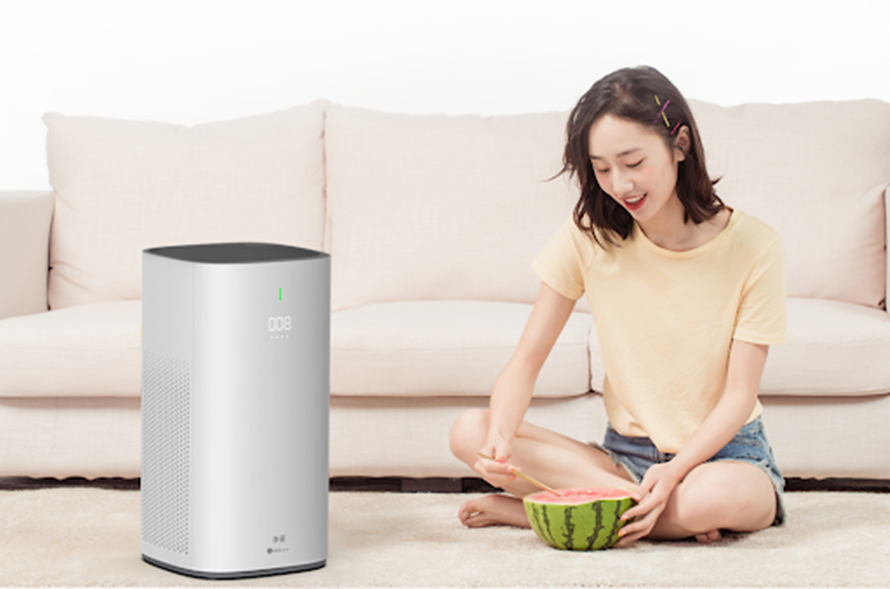- home > News > Filter knowledge
CADR value of air purifier
CADR value of air purifier
When we buy an air purifier, we will find a parameter, which is the CADR value. CADR (Clean Air Delivery Rate) is also called clean air volume in Chinese. It represents the rate at which the air purifier provides clean air (unit: m3/hour). Generally, the CADR value is roughly divided by 10 to get the air purifier’s Application area. But this Chinese translation is problematic. It should be called the clean air delivery rate, otherwise it is easy to misunderstand that the CADR value is the air supply volume of the air purifier. For different removals, there are CADR values for particulate matter and gaseous pollutants (formaldehyde, toluene, TVOC, etc.).
CADR is the ratio of clean air output from air purifiers tested by the American Association of Home Appliance Manufacturers (AHAM) in accordance with specific standards. It mainly has three detection indicators: dust, smoke and pollen. This specific standard must be recognized by AHAM of. The national standard for air purifiers formulated by my country in 2002 also introduced this indicator. In the latest national standard GBT 18801-2015, there are five main indicators for measuring air purifiers: Clean Air Delivery Rate (CADR), Cumulate Clean Mass (CCM), and Cleaning Energy Efficiency (Cleaning Energy Efficiency) , Effective Room Size, Cleaning Life Span. To evaluate an air purifier through these five indicators, there are of course some auxiliary indicators, such as noise, microbial removal, etc. Among the five indicators, CADR and CCM are the two parameters that can best represent the effect of air purifiers. CADR determines the applicable area, and CCM determines the purification life.
On the surface, the CADR value can objectively reflect the purification ability of the air purifier, but after careful analysis, in fact, this indicator has great limitations. As mentioned earlier, CADR is mainly set for large particles such as dust, smoke and pollen, so its test method has certain limitations.

1. From the point of view of the simulated pollution source of the test method, the national standard GBT 18801-2015 stipulates that the measurement of CADR uses cigarettes as the source of particulate matter. Normally, in cigarette smoke, PM2.5 accounts for about 50%, and those greater than PM2.5 account for 50%. Cigarette smoke is an aerosol, which contains solid particles and liquid particles. During the diffusion process of the smoke, these particles merge and merge. Small particles gradually merge into large particles. The longer the time, the fewer the small particles, and the larger the number of particles. It's easy to measure. CADR is calculated by measuring the number of air particles per liter. This shows that if a filter type air purifier is used, only a medium-efficiency filter can be used to achieve a high CADR value.
2. From the test environment, in order to ensure uniform concentration, the air volume of the circulating fan must reach 500-700m3/h. Such a large air volume has little effect on air purifiers with filter screens, but it is difficult to measure some purifiers that use particulate matter to settle for purification purposes, such as electrostatic and negative ions. Electrostatic purifiers tend to be as effective as the wind speed is lower. For air purifiers that purify by sedimentation, such as negative ions, this test method is simply a disaster, because the sedimented dust is raised again, and its effect cannot be measured objectively.
In addition, the CADR value represents the amount of clean air within a period of time, but the cleanliness of the clean air is not defined. In other words, to get the same clean degree of air, some purifiers need to be treated multiple times, and some may be treated once. Regardless of whether it is a filter or an electrostatic precipitator, its performance will decrease if it is used more often, which involves the problem of purification life, which leads to the CCM indicator (this article does not elaborate on CCM). Therefore, when we choose an air purifier, we must also look at the CCM value while considering the CADR value.
For some low-end, single-function air purifiers, the CADR value is often very large, but high-end air purifiers need to be considered comprehensively, and the CADR value does not have obvious advantages.
In recent years, my country's current demand for air purifiers has increased rapidly, and national standards have not kept up with the development. The market is mixed and consumers have no choice. Some businesses take advantage of blind consumption and imperfect national standards to deliberately exaggerate certain technologies and depreciate other technologies to achieve the purpose of seizing the market, and even by influencing the formulation of national standards for kidnapping, causing consumers to fail to achieve their expectations after purchasing air purifiers. The desired effect can only suffer from dumb losses.
Of course, the national standard in 2015 has been greatly improved. In the absence of a good description index, CADR can be used as an important reference index for air purifiers, but it must be judged with CCM and other indicators.
Next:下一篇:Is photocatalytic oxidation effective for air purification

